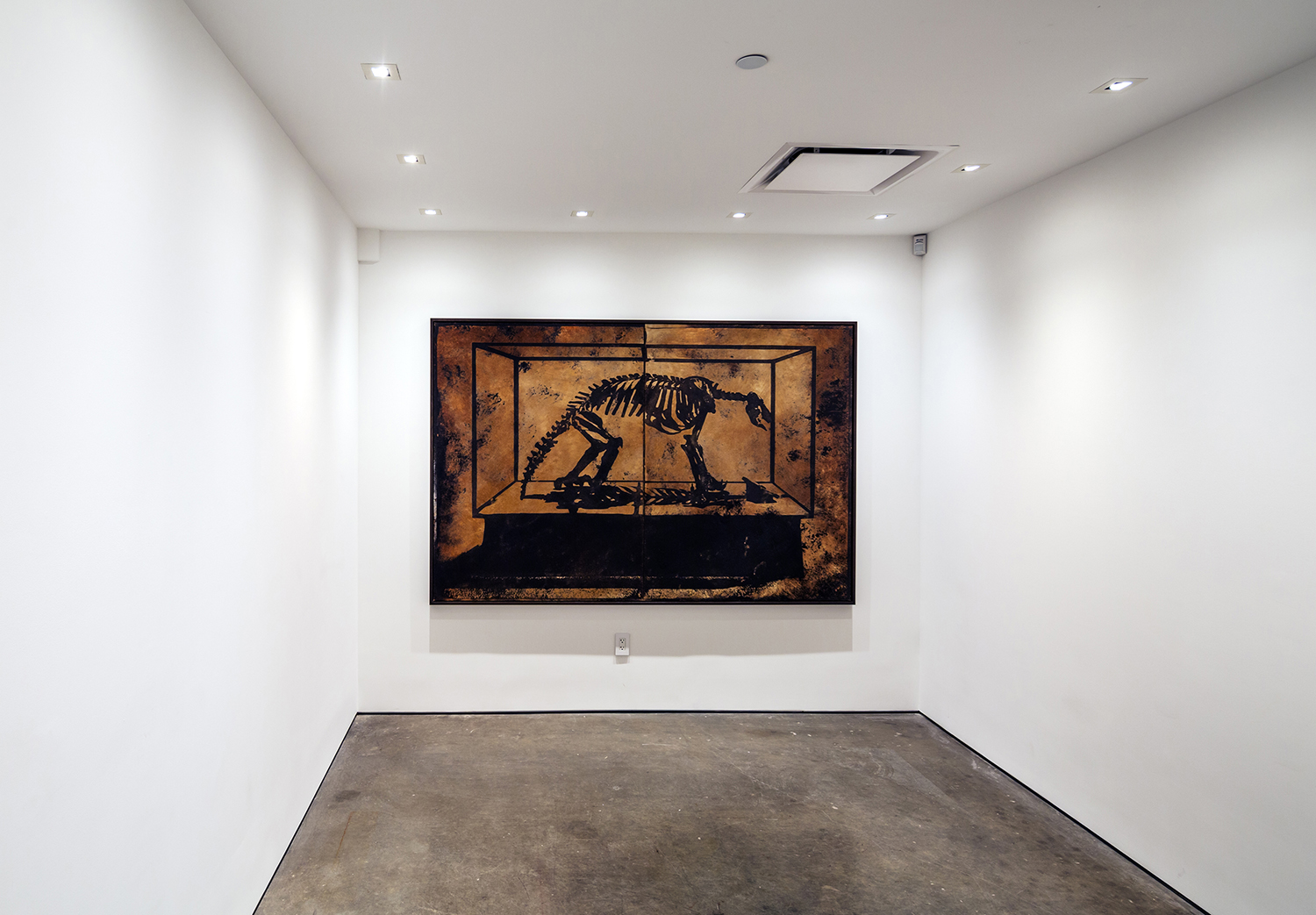Excavations
MARCH - MAY 2014
Yossi Milo Gallery, New York NY
Yossi Milo Gallery is pleased to announce an exhibition of new photographic works by Matthew Brandt from three series, Dust, La Brea and Clippings, collectively titled Excavations. The exhibition will open Thursday, March 20 and close on Saturday, May 10, with an opening reception for the artist on Thursday, March 20 from 6:00 to 8:00 pm. This is the artist’s second solo exhibition at the gallery.
In a digital world, Brandt upholds fading photographic materials and processes. His work explores vastly different photographic technologies and finds common ground between the medium and the subject. For the artist’s new bodies of work, subject and material converge in unexpected ways to create one-of-a-kind photographs that incorporate remnants from history to form a composite picture of today. From the skeletal remains of California’s prehistoric animals, to the dust particles of New York City, or the magnified details of a newspaper clipping, all are sites of excavation.
For the La Brea series, Brandt revives the heliography process, the same technique invented by Nicéphore Niépce to make the oldest surviving photograph, to create images of fossilized skeletal remains. Brandt photographs pre-historic animal displays, such as the Saber-Toothed Cat, American Neophron and Brea Condor, at the George C. Page Museum, the research institute at the La Brea Tar Pits in Los Angeles. While there, he collected tar from the pits to make large- scale heliographs of the images. Brandt covers an aluminum plate with the tar, places the negative on top and leaves the plate outside to bake in the sun. Over time, the tar exposed to light solidifies. After, the plate is washed, leaving an image of the fossil created from its ancient remains.
Brandt’s Dust prints compress time by reproducing historical photographs of demolished sites and buildings with physical elements from the present. The artist uses images of demolitions and historic New York City neighborhoods found in the New York Public Library archives to produce large-scale negatives. He then visits the location of the original building and collects dust from the structure now situated on the lot, which is used as pigment in a handmade gum-bichromate emulsion. New works from the series depict locations in the Chelsea neighborhood in the 1930s, the Lower East Side at the turn of the century, and the destruction of iconic New York City landmarks, such as Madison Square Garden and Grand Central Terminal. Dust photographs were also made of the Gallery, using dust collected during construction in 2012.
The series Clippings addresses the fading prominence of printed news. Brandt employs the lithography printing process, typically used for newspapers, to reproduce blown-up details of a found photograph from the Los Angeles Times depicting tourists at the United States Capitol Rotunda in Washington, D.C. The magnified newsprint image breaks down into colored dots of cyan, magenta, yellow and black, which the artist recreates on canvas using rhinestuds of varying sizes to define the CMY color dots and caviar for the black. Clippings celebrate the materiality of newspaper photographs, fleeting images that are disposed of daily and quickly forgotten.








